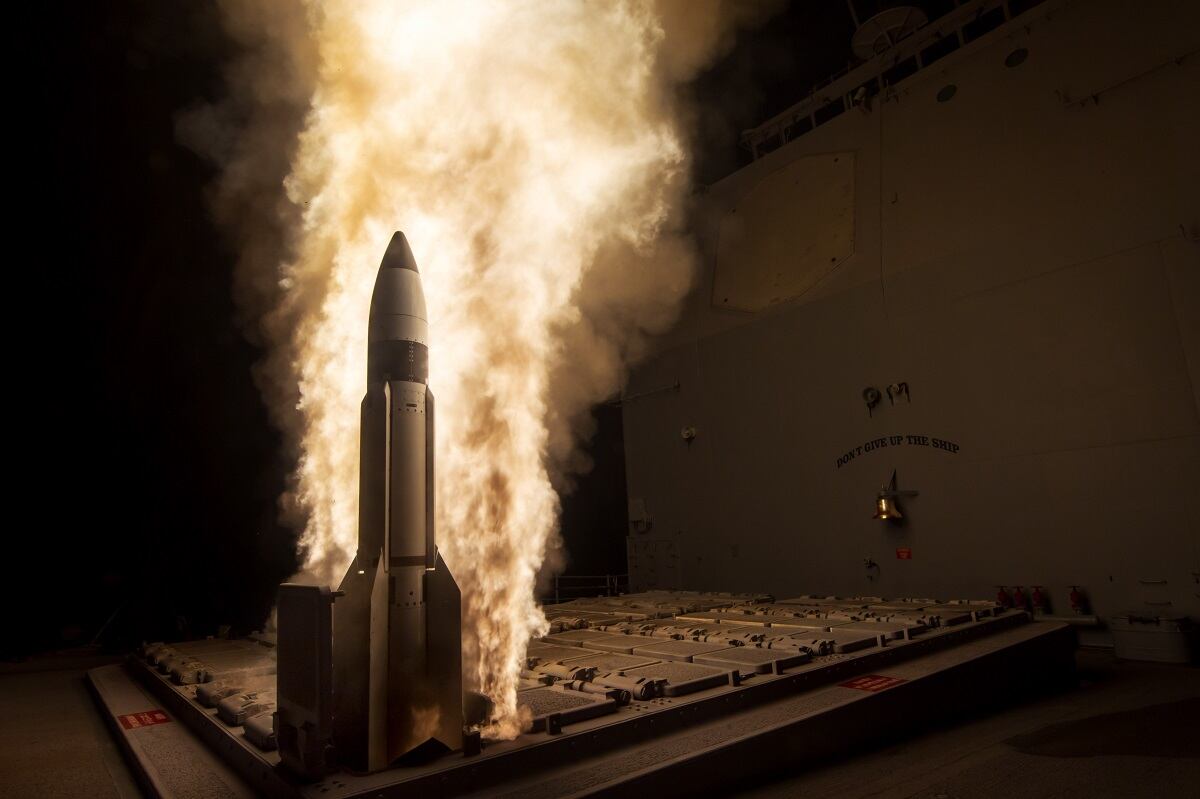On Oct. 11, Chong Jong-sup, an opposition member of South Korea’s National Assembly, revealed that South Korean naval vessels failed to detect numerous missiles launched from North Korea between May and September. Seoul’s failure to detect these launches indicates South Korea’s need to reassess not only its ballistic missile defense capabilities, but also its recent decision to terminate an essential bilateral military information-sharing agreement with Japan.
According to Chong, South Korean Navy vessels equipped with the Aegis defense system failed to detect and track North Korean ballistic missile launches on May 4, May 9, July 25, Aug. 2 and Sept. 10. According to the U.S. Congressional Research Service, the Aegis ballistic missile defense system gives vessels the “capability for providing regional defense against short and medium-range ballistic missile attacks.” Currently, the U.S., South Korea and Japan all deploy Aegis-equipped destroyers in the Pacific region.
Adm. Sim Seung-seob, South Korea’s chief of naval operations, explained that the detection failures occurred because “the missile activities were out of Aegis radar range in some cases.” Sim also highlighted the possibility that the Navy failed to update these vessels’ combat readiness systems.
The detection failures coincide with a noticeable increase in North Korean ballistic missile testing. Since May 2019, North Korea conducted 12 weapons tests. The most recent missile test involved a submarine-launched ballistic missile that highlighted Pyongyang’s attempt to secure a second-strike capability.
North Korea will likely continue conducting periodic missile tests if the regime insists on keeping its nuclear weapons and ballistic missile programs. After the failed talks in Hanoi, Vietnam, and Stockholm, Sweden, these ongoing North Korean tests reaffirm Kim’s intent to keep all of his weapons while extracting concessions from the U.S. and its allies with vague promises to disarm.
South Korea must ensure that its ballistic missile defense capabilities reach their full potential to deter and defend against the North Korean threat. Seoul, which currently possesses three Sejong the Great-class KDX III destroyers equipped with the Aegis ballistic missile defense system, plans to increase its Aegis fleet by building three more comparably equipped destroyers by 2028.
RELATED

While increasing the size of the fleet will help bolster Seoul’s defenses, South Korea’s Aegis vessels can only exchange targeting data with U.S. vessels, and not with Japanese ones. This is because U.S. and South Korean vessels share a common encryption system, whereas Japanese vessels have a different one. Information sharing would not only enhance ship-to-ship interoperability between the U.S. and South Korea but also ensure the Aegis ballistic missile defense system has a robust capability to defend against North Korean missiles.
In 2016, Tokyo and Seoul sought to overcome this hurdle with a workaround, signing the bilateral military intelligence sharing agreement known as the General Security of Military Information Agreement, or GSOMIA. Japan’s Ministry of Defense described the GSOMIA “as a framework for protecting various confidential information including information regarding North Korea’s nuclear and missile threat.”
This pact enabled South Korea and Japan to relay information about North Korean missiles that their Aegis vessels could not share with one another. Unfortunately, Seoul announced in August that it would not renew GSOMIA amid the two nations’ ongoing trade dispute. Despite its focus on economics, this dispute reflects South Korea’s deep-seated grievances that stem from imperial Japan’s role as a colonial power on the peninsula.
Fortunately, despite the complex roots of Tokyo and Seoul’s persistent strife, South Korea continues to respect GSOMIA, at least pending its expiration on Nov. 22. Under GSOMIA, South Korea earlier this month shared with Japan its assessment of North Korea’s submarine-launched ballistic missile, helping Japan correct its mistaken evaluation that Pyongyang launched two short-range missiles, rather than a single sub-launched ballistic missile that can strike more extended-range targets.
This case illustrates how intelligence sharing could help Japan and South Korea construct a more comprehensive understanding of the threat from Pyongyang.
Seoul’s political leadership should therefore reconsider its decision not to renew GSOMIA. Bilateral exchange of military intelligence is essential for the two countries to have common situational awareness. Washington’s allies can also take their cooperation a step further by adopting a common encryption system for Korean and Japanese Aegis vessels, enabling their vessels to communicate targeting data in live wartime scenarios in order to boost overall ship-to-ship interoperability.
Overall, resolving South Korea and Japan’s historic tensions will take time and require bold leadership from Seoul and Tokyo. However, Pyongyang’s drive to perfect its ballistic missiles should remind America’s two Asian allies that deepening security cooperation will enhance readiness and bolster deterrence against a common threat.
Mathew Ha is a research associate focused on North Korea at the Foundation for Defense of Democracies, where he also contributes to FDD’s Center on Military and Political Power.






